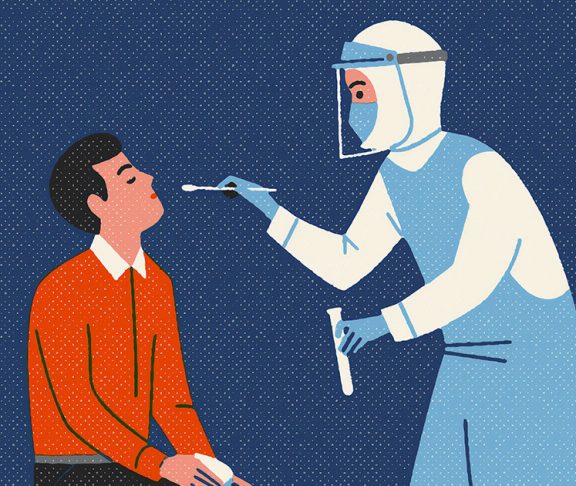
Tina S. Morris, Ph.D.
Executive Director, American Association of Pharmaceutical Scientists (AAPS)
COVID-19 has focused attention on the critical role vaccines and herd immunity play in securing the public’s health. Alongside the case counts and death toll from this virus, the hope for a fast, effective, and easily distributed vaccine continues to climb.
However, the researchers and pharmaceutical scientists responding to this crisis are working on more than vaccines. They know the greatest successes in beating back disease require a three-pronged approach:
1. Diagnostics (testing)
We must know who has been infected to determine who we need to isolate in order to stop the spread of the disease — and to learn how the virus works. Reliable, broad-based testing is vital to conquering an infectious disease because it shows us the cycle of the illness. It informs scientists when symptoms occur, if immunity follows (and if so, for how long), and how the illness may branch based on a patient’s pre-existing conditions.
Frontline physicians rely on this information to choose treatments and scientists rely on it to develop those treatments.
2. Anti-infectives
Therapies that inactivate disease agents after they’ve started multiplying inside a patient’s body are as important as vaccines. They can reduce the length of time someone is ill and limit the destruction a disease causes inside the body.
COVID-19 can last far longer than 14 days, and may trigger secondary infections and the need for invasive treatments like ventilators. The foregoing infections and invasive treatments would be hard on a body even if it wasn’t fighting for oxygen. Anti-infectives can make diseases like COVID-19 less dangerous.
3. Preventive immunization
We rarely eradicate infectious diseases — there are still a half-dozen cases of the bubonic plague each year. Fortunately, such cases are now easily treated with antitoxin therapy and other available countermeasures.
The goal of public health efforts is to protect a community while also preventing the spread of an infectious agent. This is where vaccines come in. Vaccines have helped us control deadly diseases including polio, measles, yellow fever, and many more.
Vaccines make it possible to establish herd immunity, which happens when enough people have antibodies to the disease to make it stop spreading, since the virus runs out of susceptible targets.
This is difficult to achieve without a vaccine. Depending on the disease’s life cycle and infectiousness, it can continually find new hosts. Vaccines reduce the number of potential hosts quickly and safely.
The long road
In many ways, vaccines are the magic bullet that the infectious diseases pioneer Paul Ehrlich sought in the 19th century. Unfortunately, the attribute that makes vaccines so powerful — being a near-universal shield for a vast, diverse, healthy population — also makes them difficult to develop. Vaccines must be safety-tested in large, diverse groups of healthy volunteers to determine how well they protect against a disease in people of differing genetic traits.
Scale and access are important factors as well. The ongoing effort to eradicate polio worldwide has required decades of mass vaccination campaigns to deliver more than 20 billion doses of vaccines. This has resulted in the interruption of polio transmission in all but three countries. Polio is a debilitating, yet well-understood, viral disease for which vaccines have been available since the mid-1950s.
To create an effective vaccine that will prevent a new disease, researchers must first understand which components of the disease agent lead to the formation of antibodies, which leads to immunity. In some cases, especially with viruses like the flu, the virus changes over time. Such changes allow the virus to continue moving through people, which is why scientists continually chase the virus with new versions of a vaccine, which is why you get a new flu shot every year.
Changing the game
The good news is this: Modern biotechnology has revolutionized how we discover and develop the necessary tools to create vaccines. The toolbox of approaches has been expanded, which accelerates vaccine development.
We can now synthesize vaccines that look like a virus particle but are harmless to the patient. We can use genetic material for vaccination, which will generate antigens in the patient’s body that lead to an immune response. Modern delivery technologies for vaccines allow safer, easier, and faster administration to patients with a variety of health conditions. New technologies allow vaccine developers to better model and predict how a vaccine will perform in patients.
Vaccines are finally getting their much-deserved time in the spotlight, but their real power comes their ability to make a disease disappear from the public’s attention, leaving us to go about our lives safely.
If all goes well, we will tell our children about COVID-19, but they won’t really understand because they will not have lost someone to it.



